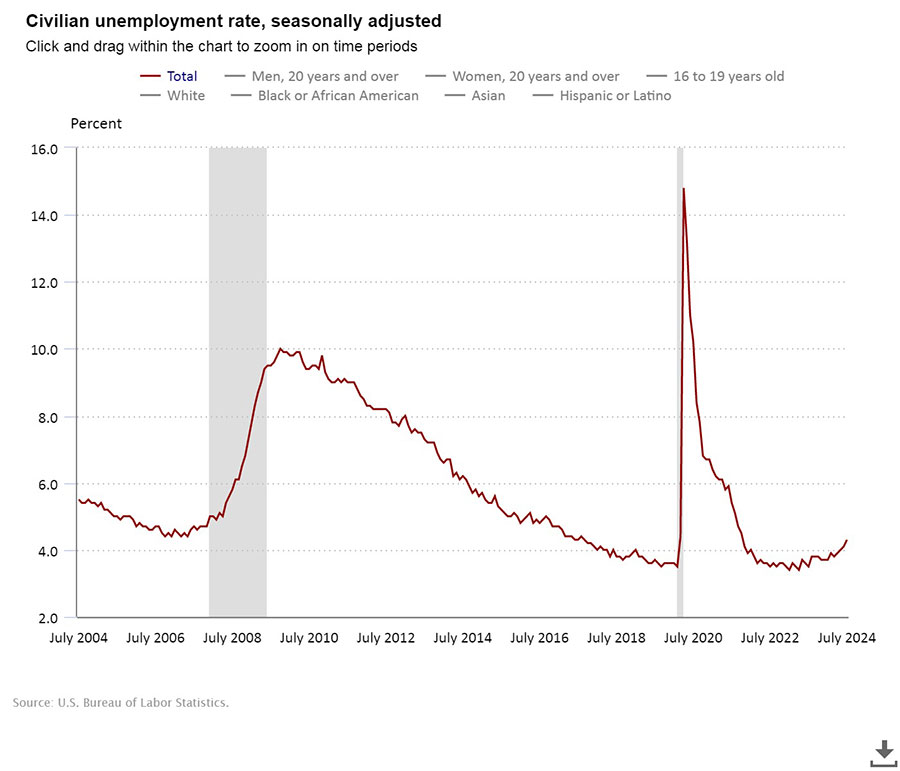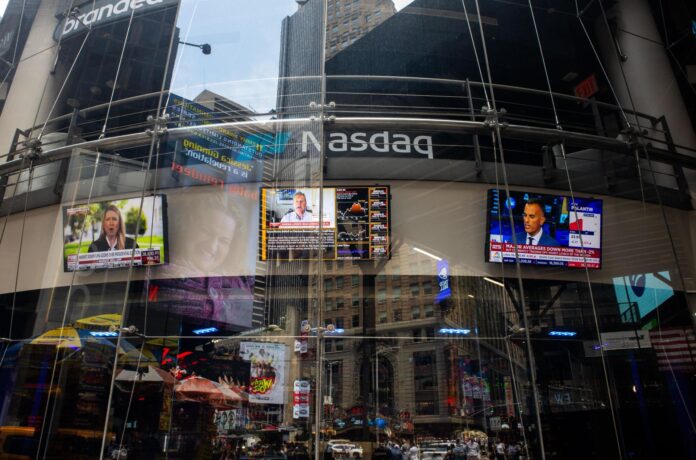TV pundits are in a frenzy over the current Wall Street sell-off. The panic in the financial sector accelerated after the Bureau of Labor Statistics released July employment numbers, showing that 114,000 jobs were added to the U.S. economy, falling short of the nearly double that figure that was expected.
Let’s put things in perspective. Employment forecasts have been inconsistent over the past two years, predicting a recession that never materializes. Strong employment is supposedly why the Federal Reserve is continuing to hike interest rates. However, the real reason is their desire to increase unemployment to discipline a labor force that is rapidly growing in strength, unionizing, and finally achieving real wage gains.
The alarms on Wall Street are more of a political maneuver to pressure the Fed to lower interest rates in the coming months. The financial sector is finally realizing that the Fed has gone too far with its rigid rate hikes.
Several factors could explain the changes in unemployment: frictional unemployment (people temporarily leaving jobs to look for new ones), 4 million youths turning 18 this year, and temporary layoffs of 249,000 workers in July.

According to the Bureau of Labor Statistics, in July, the unemployment rates for adult men (4.0 percent) and Whites (3.8 percent) increased. Meanwhile, the rates for adult women (3.8 percent), teenagers (12.4 percent), Blacks (6.3 percent), Asians (3.7 percent), and Hispanics (5.3 percent) showed little or no change over the month.
External political pressures on the Fed will only intensify. The Biden Administration cannot tolerate an economic downturn close to the November elections. It’s time for the Fed to reconsider its approach.







